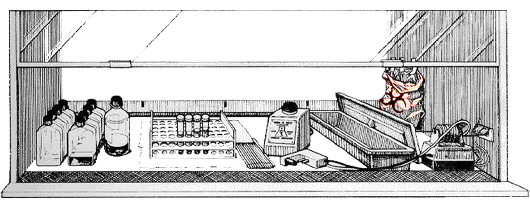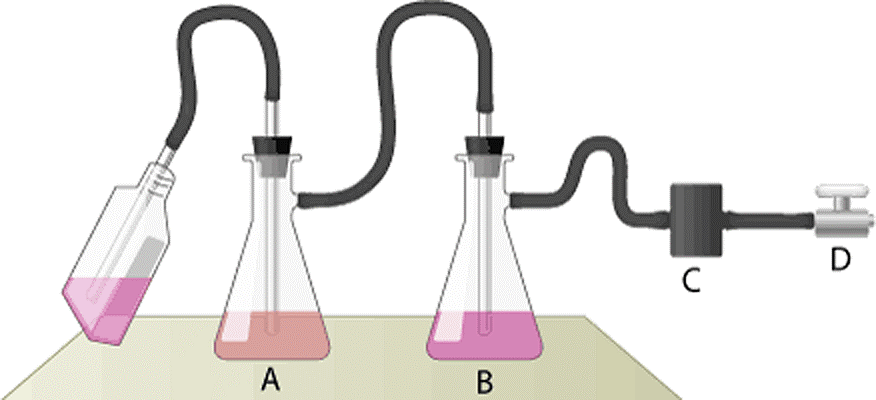All Biological Safety Cabinets (BSC) that are used with infectious materials must be certified annually and after repairs/being moved/maintained. Certifications and repairs are performed by a contractor coordinated through EHS.
Purpose
- Product Protection
- Personal Protection
- Environmental Protection
- Operating Procedure
- Load BSC with all needed supplies.
- Turn BSC on and allow to run for 10 - 15 minutes.
- Check inward airflow with a piece of tissue.
- Enter straight into cabinet and perform work in a slow, methodical manner.
- At end of work, decontaminate all items to be taken out of cabinet.
- Decontaminate interior of BSC.
- Allow cabinet to run for 10 - 15 minutes before shutting off.
- Review owner's manual for additional instructions.
Safe Operation
- Always enter straight into cabinet - no sweeping motions.
- Place materials well within the cabinet - never on front or back grill.
- Place waste container within cabinet.
- Watch for disruption of laminar air flow.
- Decontaminate materials before removal from cabinet.
- In general, not designed for chemical use.
- May use for non-volatile toxic chemicals or low-level radioactive materials.
- May use for minute amounts of volatile chemicals.
- Ensure annual calibration.
- Place all work materials into cabinet before starting.
- Work from clean side to dirty side.
Cautions
- Chemical may damage HEPA filter.
- Volatile chemicals not retained by HEPA filter (exposes personnel if not exhausted).
- BSC fans not spark proof - chemical use may result in a fire or explosion.
- DO NOT use Bunsen burners or other open flames – they can affect airflow and damage HEPA filters.

A typical layout for working “clean to dirty” within a Class II BSC. Clean cultures (left) can be inoculated (center); contaminated pipettes can be discarded in the shallow pan and other contaminated materials can be placed in the biohazard bag (right). This arrangement is reversed for left-handed persons.

One method to protect a house vacuum system during aspiration of fluids. The left suction flask (A) is used to collect the contaminated fluids into a suitable decontamination solution; the right flask serves as a fluid overflow collection vessel. An in-line HEPA filter (C) is used to protect the vacuum system (D) from aerosolized microorganisms.
Moving Biosafety cabinets
Please not that prior to moving any used biosafety cabinet EHS must be informed so that an assessment can be done to determine decontamination needed.
